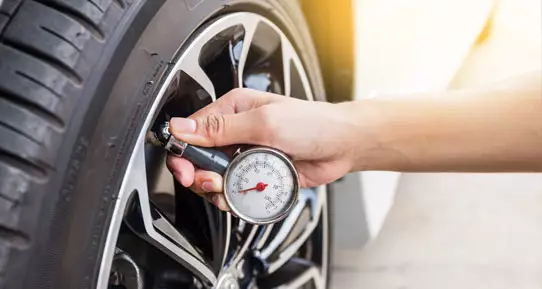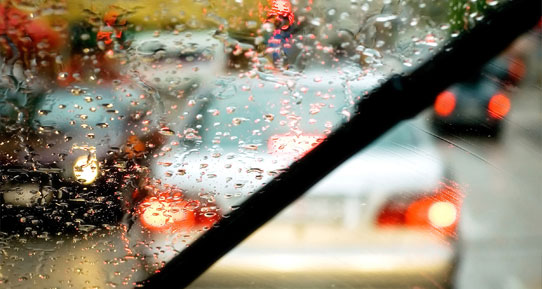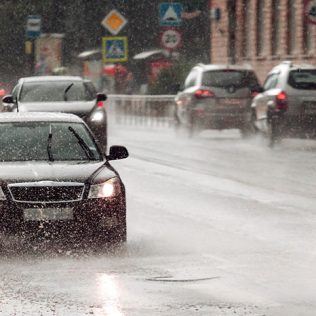It doesn’t happen very often, but occasionally there is rain in Dubai. And when it happens, it can be incredibly heavy causing large amounts of standing water on the roads, and hazardous driving conditions. Most accidents happen on Dubai’s rain-soaked roads because drivers are so used to dry conditions that they find it challenging to change their driving technique to suit the new hazards they face. So if you’re caught in a downpour on Dubai’s roads, here’s a few tips from Hertz Car Rental to stay safe.
1.Check your tyres

The first point of contact between your car and the roadare its tyres. If they’re in good condition with plenty oftread (3-4mm is optimum) then they should be perfectly effective at pushing the excess water away (via the tread pattern grooves) and allowing the rubber to make contact with the road surface. If your tyres are in poor condition then they cannot do that, and your car is pretty much driving along on a sheet of water. This puts you at high risk of ‘aquaplaning’, when the car loses tractionwith the road. A key indicator of this is you’ll feel your steering start to go ‘light’, and the car will begin to slide. Good quality tyres will help prevent this dangerous situation from occurring.
2. Brakes – a potential life saver
While your brakes may seem to work perfectly in dry conditions, a wet road will dramatically increase your stopping distance and put extra demands on your braking system. Before the rain season kicks in, get your braking system checked from top to bottom, including pads, discs, drums (if you have them), and all the hoses. Remember, your life could depend on those brakes working perfectly. If you’ve been driving in wet conditions (especially through flood water) then find a safe place to stop and pump the brakes a few times with your foot to help dry out the pads and reduce the chances of slipping.
3. Check your lights
A sudden downpour not only dumps a great deal of water on the road, but the light levels can also drop dramatically. Make sure your lights work so you can be seen clearly by other road users when visibility drops.
4. Make sure you can see where you’re going

You may rarely use your windscreen wipers, but when you need them they’re one of the most essential pieces of safety equipment on your vehicle. If you cannot see where you’re going in the middle of a downpour because your wipers don’t work, then you could run the risk of having a bad accident. Wiper blades do deteriorate (especially when exposed to the abrasive effect of sand) so check them regularly so they work properly when you need them.
5. Change how you think – and slow down!
The easiest way to have an accident in wet conditions is to drive like it’s still dry. You’ll need to change your mindset to cope with the conditions you encounter, especially if you’re not used to driving in wet conditions or during heavy rain. That puddle may be considerably deeper than you think, or the water may have washed part of the road away. So always assume that there are additional hazards out there you’ll need to cope with, especially if you’re driving at night.
As we said earlier, your stopping distance is going to be at least four times greater than in dry conditions, so slow down, leave plenty of room between yourself and the vehicle in front, and if necessary add a little extra journey time on to your trip.
